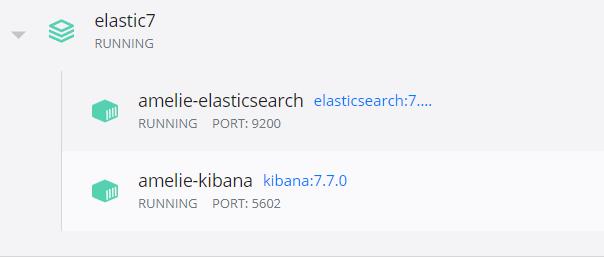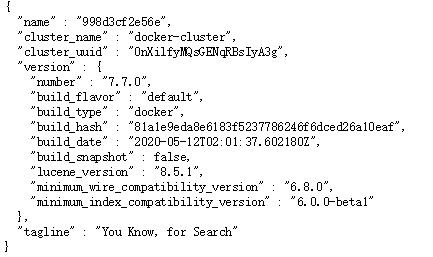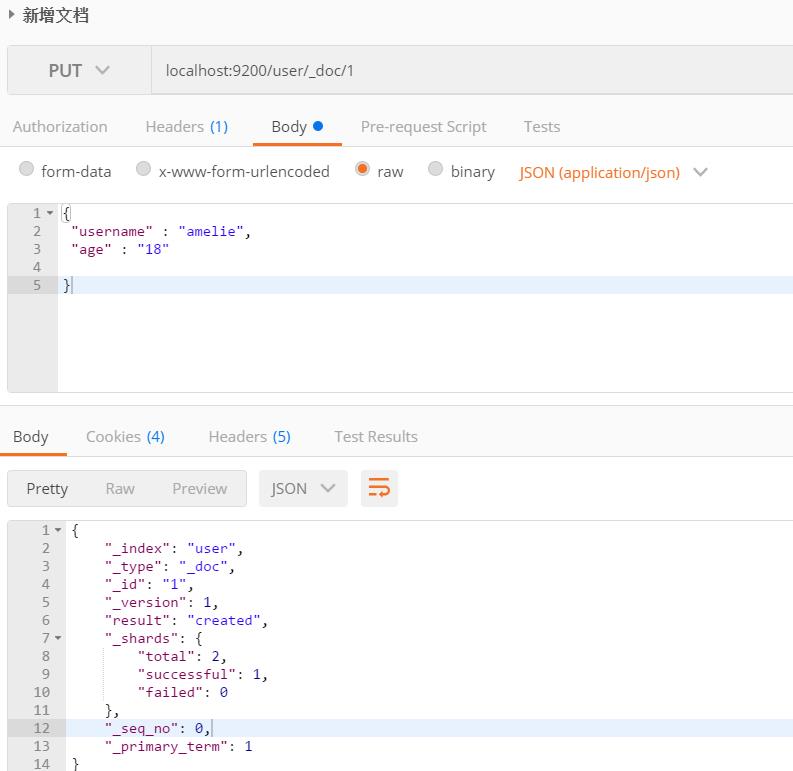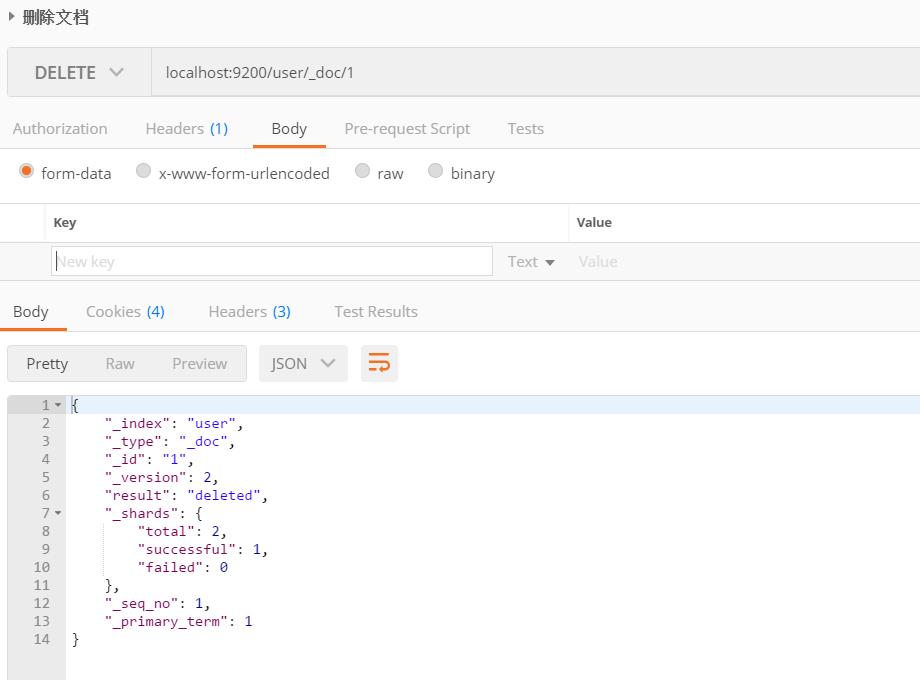Elasticsearch基础
Posted Amelie11
tags:
篇首语:本文由小常识网(cha138.com)小编为大家整理,主要介绍了Elasticsearch基础相关的知识,希望对你有一定的参考价值。
介绍
什么是全文搜索引擎
众所周知,常用的搜索网站有:百度、谷歌等。那么要对数据进行搜索,是不是需要先了解数据的分类
数据的分类
结构化数据:指具有固定格式或有限长度的数据,如数据库、元数据等
对于结构化的数据,一般是通过关系型数据库(mysql、oracle等)进行存储和搜索,也可以建立索引。通过b-tree等数据结构快速搜索。
非结构化数据:全文数据,指不定长度或无固定格式的数据,如文档等
对于非结构化的数据,也就是全文数据:顺序扫描法、全文搜索法
顺序扫描
按照顺序扫描的⽅式查找特定的关键字。⽐如在关于海贼王的帖子中,找出"路飞"这个名字在哪些段落出现过。那你肯定需要从头到尾把⽂章阅读⼀遍,然后标记出关键字在哪些地⽅出现过。这种⽅法想想都是最低效的。
全文搜索
对全文数据进⾏顺序扫描很慢,那怎么进行优化?把我们的⾮结构化数据想办法弄得有⼀定结构不就⾏了吗?将⾮结构化数据中的⼀部分信息提取出来,重新组织,使其变得有⼀定结构,然后对这些有⼀定结构的数据进⾏搜索,从⽽达到搜索相对较快的⽬的。这种⽅式就构成了全⽂搜索的基本思路。这部分从⾮结构化数据中提取出的然后重新组织的信息,我们称为索引。
什么是全文搜索引擎
全文搜索引擎是目前广泛应用的主流搜索引擎。它的工作原理是计算机索引程序通过扫描文章中的每一个词,对每一个词建立一个索引,指明该词在文章中出现的次数和位置,当用户查询时,检索程序就根据事先建立的索引进行查找,并将查找的结果反馈给用户的检索方式。
常见的搜索引擎
Lucene,Solr,Elasticsearch
Lucene
Lucene是⼀个Java全⽂搜索引擎,只是⼀个框架,⼀个代码库和API,要充分利⽤它的功能,需要使⽤java,并且在程序中集成,这样可以很容易地⽤于向应⽤程序添加搜索功能。
通过简单的API提供强⼤的功能 :
可扩展的⾼性能索引
强⼤,准确,⾼效的搜索算法
跨平台解决⽅案
Solr
Solr是⼀个基于Lucene的Java库构建的开源搜索平台。它以⽤户友好的⽅式提供Apache Lucene的搜索功能。它是⼀个成熟的产品,拥有强⼤⽽⼴泛的⽤户社区。它能提供分布式索引,复制,负载均衡查询以及⾃动故障转移和恢复。如果它被正确部署然后管理得好,它就能够成为⼀个⾼度可靠,可扩展且容错的搜索引擎
强⼤的功能
全⽂搜索
突出
分⾯搜索
实时索引
动态群集
数据库集成
NoSQL功能和丰富的⽂档处理
Elasticsearch
Elasticsearch是⼀个开源,是⼀个基于Apache Lucene库构建的Restful搜索引擎.Elasticsearch是在Solr之后⼏年推出的。它提供了⼀个分布式,多租户能⼒的全⽂搜索引擎,具有HTTP Web界⾯(REST)和⽆架构JSON⽂档。Elasticsearch的官⽅客户端库提供Java,Groovy,php,Ruby,Perl,Python,.NET和javascript。
主要功能
分布式搜索
数据分析
分组和聚合
应⽤场景
维基百科
电商⽹站
⽇志数据分析
为什么不用mysql做搜索引擎
我们的所有数据都是放在数据库⾥的,⽽且 Mysql,Oracle,SQL Server 等数据库也能提供查询搜索功能,直接通过数据库查询不就可以了?确实,我们⼤部分的查询都能通过数据库查询,如果查询效率低,还可以通过新建数据库索引,优化SQL等⽅式提升效率,也可以通过引⼊缓存⽐如redis,memcache来加快数据的返回速度。如果数据量更⼤,还可以通过分库分表来分担查询压⼒。那为什么还要全⽂搜索引擎呢
数据类型
全⽂索引搜索很好的⽀持⾮结构化数据的搜索,可以更好地快速搜索⼤量存在的任何单词⾮结构化⽂本。例如 Google,百度类的⽹站搜索,它们都是根据⽹⻚中的关键字⽣成索引,我们在搜索的时候输⼊关键字,它们会将该关键字即索引匹配到的所有⽹⻚返回;还有常⻅的项⽬中应⽤⽇志的搜索等等。对于这些⾮结构化的数据⽂本,关系型数据库搜索不能很好的⽀持。
搜索性能
如果使⽤mysql做搜索,⽐如有个人物表character,有字段名称name,要查找出
名称以“蒙奇”开头的人物,和含有蒙奇的人物。数据量达到千万级别的时候怎么办?
--该查询还好
select * from charact where name like '蒙奇%';
--无法走索引
select * from charact where name like '%蒙奇%';灵活的索引
如果我们想查出名字叫蒙奇D路飞的人物,但是⽤户输⼊了蒙奇,我们想提示他⼀些关键字

索引的维护
⼀般传统数据库,全⽂搜索都实现的很鸡肋,因为⼀般也没⼈⽤数据库存⻓⽂本字段,因为进⾏全⽂搜索的时候需要扫描整个表,如果数据量⼤的话即使对SQL的语法进⾏优化,也是效果甚微。即使建⽴了索引,但是维护起来也很麻烦,对于 insert 和 update 操作都会重新 构建索引。
适合全⽂索引引擎的场景
搜索的数据对象是⼤量的⾮结构化的⽂本数据。
⽂本数据量达到数⼗万或数百万级别,甚⾄更多。
⽀持⼤量基于交互式⽂本的查询。
需求⾮常灵活的全⽂搜索查询。
读多写少。
快速搭建elasticsearch
可以通过docker进行快速搭建,docker-compose.xml如下,
version: '3'
services:
elasticsearch:
image: elasticsearch:7.7.0
container_name: amelie-elasticsearch
environment:
ES_JAVA_OPTS: -Djava.net.preferIPv4Stack=true -Xms512m -Xmx512m
transport.host: 0.0.0.0
discovery.type: single-node
bootstrap.memory_lock: "true"
discovery.zen.minimum_master_nodes: 1
discovery.zen.ping.unicast.hosts: elasticsearch
volumes:
- elasticsearch-volume:/usr/share/elasticsearch/data
ports:
- "9200:9200"
- "9300:9300"
kibana:
image: kibana:7.7.0
container_name: amelie-kibana
environment:
ELASTICSEARCH_URL: http://elasticsearch:9200
links:
- elasticsearch:elasticsearch
ports:
- "5602:5601"
depends_on:
- elasticsearch
volumes:
elasticsearch-volume:启动:docker-compose up -d

访问http://localhost:5602即可看到kibana的界面

访问http://localhost:9200/可看到elastic相关信息

基础使用
elastic search核⼼概念
Elasticsearch | 关系型数据库 |
索引(index) | 数据库 |
类型(type): 注意: ES 5.x中⼀个index可以有多种type。 ES 6.x中⼀个index只能有⼀种type。 ES 7.x以后已经移除type这个概念 | 表:如用户表、角色表 |
映射(mapping),定义了每个字段的类型等信息 | 表结构 |
⽂档(document) | ⼀⾏记录 |
字段(field) | 字段 |
集群(cluster)
集群由⼀个或多个节点组成,⼀个集群有⼀个默认名称"elasticsearch"。
节点(node)
集群的节点,⼀台机器或者⼀个进程
分⽚和副本(shard)
副本是分⽚的副本。分⽚有主分⽚(primary Shard)和副本分⽚(replica Shard)。⼀个Index数据在物理上被分布在多个主分⽚中,每个主分⽚只存放部分数据。每个主分⽚可以有多个副本,叫副本分⽚,是主分⽚的复制。
快速入门
获取elasticsearch状态
"name" : "998d3cf2e56e",
"cluster_name" : "docker-cluster",
"cluster_uuid" : "0nXilfyMQsGENqRBsIyA3g",
"version" :
"number" : "7.7.0",
"build_flavor" : "default",
"build_type" : "docker",
"build_hash" : "81a1e9eda8e6183f5237786246f6dced26a10eaf",
"build_date" : "2020-05-12T02:01:37.602180Z",
"build_snapshot" : false,
"lucene_version" : "8.5.1",
"minimum_wire_compatibility_version" : "6.8.0",
"minimum_index_compatibility_version" : "6.0.0-beta1"
,
"tagline" : "You Know, for Search"
新增文档
PUT localhost:9200/user/_doc/1

删除文档
DELETE localhost:9200/user/_doc/1

索引的使用
方法 | URL | 结果 |
新增 | PUT localhost:9200/onepiece | |
获取 | GET localhost:9200/onepiece | |
删除 | DELETE localhost:9200/onepiece | |
批量获取 | GET localhost:9200/onepiece,user | |
获取所有 | GET localhost:9200/_all GET localhost:9200/_cat/indices?v | 第二种方式返回: 
|
关闭 | POST localhost:9200/onepiece/_close | 关闭索引后,就无法再创建文档,若创建则会报错: |
打开 | POST localhost:9200/onepiece/_open | |
映射的使用
操作 | URL | 数据 | 结果 |
新增 | post localhost:9200/onepiece/_mapping | | |
获取 | get localhost:9200/_mapping | ||
修改 | put localhost:9200/onepiece/_mapping |
文档的使用
新增文档
操作 | URL | 数据 | 结果 |
新增 | PUT localhost:9200/onepiece/_doc/1 必须指定id | | |
新增2 | POST localhost:9200/nba/_doc 不指定id | | |
查看 | GET localhost:9200/onepiece/_doc/1 | | |
查看多个 | POST localhost:9200/_mget | | |
查看多个指定索引 | POST localhost:9200/onepiece/_mget | | |
修改 | POST localhost:9200/onepiece/_doc/1 | | |
删除 | DELETE localhost:9200/onepiece/_doc/1 |
搜索的简单使用
term(词条)查询和full text(全⽂)查询
词条查询:词条查询不会分析查询条件,只有当词条和查询字符串完全匹配时,才匹配搜 索。
全⽂查询:ElasticSearch引擎会先分析查询字符串,将其拆分成多个分词,只要已分析的字段中包含词条的任意⼀个,或全部包含,就匹配查询条件,返回该⽂档;如果不包含任意⼀个分词,表示没有任何⽂档匹配查询条件
单条term
关键字查询,精确查询,mapping中type为keyword
post localhost:9200/onepiece/_search
"query":
"term":
"name":"路飞"
多条term
post localhost:9200/onepiece/_search
"query":
"terms":
"name":["路飞","索隆"]
match_all
post localhost:9200/onepiece/_search
"query":
"match_all":
,
"from": 0,
"size": 10
match
post localhost:9200/onepiece/_search
"query":
"match":
"role": "船小长"
会进行分词: 船、小、长,发现有2个在文档中
结果:
"took": 1,
"timed_out": false,
"_shards":
"total": 1,
"successful": 1,
"skipped": 0,
"failed": 0
,
"hits":
"total":
"value": 1,
"relation": "eq"
,
"max_score": 2.0834165,
"hits": [
"_index": "onepiece",
"_type": "_doc",
"_id": "1",
"_score": 2.0834165,
"_source":
"name": "路飞",
"role": "船长",
"skill": "橡胶巨人手枪"
]
multi_match
多字段匹配
post localhost:9200/onepiece/_search
"query":
"multi_match":
"query":"船长",
"fields":["name","role"]
match_phrase
类似词条查询,精确
post localhost:9200/onepiece/_search
"query":
"match_phrase":
"role":"厨师"
match_phrase_prefix
post localhost:9200/onepiece/_search
"query":
"match_phrase_prefix":
"skill":"三"
#结果
"took": 3,
"timed_out": false,
"_shards":
"total": 1,
"successful": 1,
"skipped": 0,
"failed": 0
,
"hits":
"total":
"value": 1,
"relation": "eq"
,
"max_score": 1.0925692,
"hits": [
"_index": "onepiece",
"_type": "_doc",
"_id": "2",
"_score": 1.0925692,
"_source":
"name": "索隆",
"role": "战斗员",
"skill": "三刀流"
]
分词器
什么是分词器
将⽤户输⼊的⼀段⽂本,按照⼀定逻辑,分析成多个词语的⼀种⼯具
常⽤的内置分词器
standard analyzer
标准分析器:默认分词器,如果未指定,则使用该分词器
POST localhost:9200/_analyze
"analyzer": "standard",
"text":"1-Piece that is so much fun that I never want to miss a chapter or episode"
结果:
"tokens": [
"token": "1",
"start_offset": 0,
"end_offset": 1,
"type": "<NUM>",
"position": 0
,
"token": "piece",
"start_offset": 2,
"end_offset": 7,
"type": "<ALPHANUM>",
"position": 1
,
"token": "that",
"start_offset": 8,
"end_offset": 12,
"type": "<ALPHANUM>",
"position": 2
,
"token": "is",
"start_offset": 13,
"end_offset": 15,
"type": "<ALPHANUM>",
"position": 3
,
"token": "so",
"start_offset": 16,
"end_offset": 18,
"type": "<ALPHANUM>",
"position": 4
,
"token": "much",
"start_offset": 19,
"end_offset": 23,
"type": "<ALPHANUM>",
"position": 5
,
"token": "fun",
"start_offset": 24,
"end_offset": 27,
"type": "<ALPHANUM>",
"position": 6
,
"token": "that",
"start_offset": 28,
"end_offset": 32,
"type": "<ALPHANUM>",
"position": 7
,
"token": "i",
"start_offset": 33,
"end_offset": 34,
"type": "<ALPHANUM>",
"position": 8
,
"token": "never",
"start_offset": 35,
"end_offset": 40,
"type": "<ALPHANUM>",
"position": 9
,
"token": "want",
"start_offset": 41,
"end_offset": 45,
"type": "<ALPHANUM>",
"position": 10
,
"token": "to",
"start_offset": 46,
"end_offset": 48,
"type": "<ALPHANUM>",
"position": 11
,
"token": "miss",
"start_offset": 49,
"end_offset": 53,
"type": "<ALPHANUM>",
"position": 12
,
"token": "a",
"start_offset": 54,
"end_offset": 55,
"type": "<ALPHANUM>",
"position": 13
,
"token": "chapter",
"start_offset": 56,
"end_offset": 63,
"type": "<ALPHANUM>",
"position": 14
,
"token": "or",
"start_offset": 64,
"end_offset": 66,
"type": "<ALPHANUM>",
"position": 15
,
"token": "episode",
"start_offset": 67,
"end_offset": 74,
"type": "<ALPHANUM>",
"position": 16
]
simple analyzer
simple 分析器当它遇到只要不是字⺟的字符,就将⽂本解析成term,⽽且所有的term都是⼩写的。
POST localhost:9200/_analyze
"analyzer": "simple",
"text":"1-Piece that is so much fun that I never want to miss a chapter or episode!"
与上面的区别是数字没了
"tokens": [
"token": "piece",
"start_offset": 2,
"end_offset": 7,
"type": "word",
"position": 0
,
"token": "that",
"start_offset": 8,
"end_offset": 12,
"type": "word",
"position": 1
,
"token": "is",
"start_offset": 13,
"end_offset": 15,
"type": "word",
"position": 2
,
"token": "so",
"start_offset": 16,
"end_offset": 18,
"type": "word",
"position": 3
,
"token": "much",
"start_offset": 19,
"end_offset": 23,
"type": "word",
"position": 4
,
"token": "fun",
"start_offset": 24,
"end_offset": 27,
"type": "word",
"position": 5
]
whitespace analyze
whitespace 分析器,当它遇到空⽩字符时,就将⽂本解析成term,数字、大小写、标点符号都不会做处理
POST localhost:9200/_analyze
"analyzer": "whitespace",
"text":"1-Piece that is so much Fun !"
结果:
"tokens": [
"token": "1-Piece",
"start_offset": 0,
"end_offset": 7,
"type": "word",
"position": 0
,
"token": "that",
"start_offset": 8,
"end_offset": 12,
"type": "word",
"position": 1
,
"token": "is",
"start_offset": 13,
"end_offset": 15,
"type": "word",
"position": 2
,
"token": "so",
"start_offset": 16,
"end_offset": 18,
"type": "word",
"position": 3
,
"token": "much",
"start_offset": 19,
"end_offset": 23,
"type": "word",
"position": 4
,
"token": "Fun",
"start_offset": 24,
"end_offset": 27,
"type": "word",
"position": 5
,
"token": "!",
"start_offset": 28,
"end_offset": 29,
"type": "word",
"position": 6
]
stop analyzer
stop 分析器 和 simple 分析器很像,唯⼀不同的是,stop 分析器增加了对删除停⽌词的⽀持,默认使⽤了english停⽌词。stopwords 预定义的停⽌词列表,⽐如 (the,a,an,this,of,at)等
"analyzer": "stop",
"text":"1-Piece that is so much Fun !"
"tokens": [
"token": "piece",
"start_offset": 2,
"end_offset": 7,
"type": "word",
"position": 0
,
"token": "so",
"start_offset": 16,
"end_offset": 18,
"type": "word",
"position": 3
,
"token": "much",
"start_offset": 19,
"end_offset": 23,
"type": "word",
"position": 4
,
"token": "fun",
"start_offset": 24,
"end_offset": 27,
"type": "word",
"position": 5
]
language analyzer
特定的语⾔的分词器,⽐如说,english,英语分词器),内置语⾔:arabic, armenian,basque, bengali, brazilian, bulgarian, catalan, cjk, czech, danish, dutch, english, finnish,french, galician, german, greek, hindi, hungarian, indonesian, irish, italian, latvian,lithuanian, norwegian, persian, portuguese, romanian, russian, sorani, spanish,swedish, turkish,
"analyzer": "english",
"text":"1-Piece that is so much Fun !"
"tokens": [
"token": "1",
"start_offset": 0,
"end_offset": 1,
"type": "<NUM>",
"position": 0
,
"token": "piec",
"start_offset": 2,
"end_offset": 7,
"type": "<ALPHANUM>",
"position": 1
,
"token": "so",
"start_offset": 16,
"end_offset": 18,
"type": "<ALPHANUM>",
"position": 4
,
"token": "much",
"start_offset": 19,
"end_offset": 23,
"type": "<ALPHANUM>",
"position": 5
,
"token": "fun",
"start_offset": 24,
"end_offset": 27,
"type": "<ALPHANUM>",
"position": 6
]
pattern analyzer
⽤正则表达式来将⽂本分割成terms,默认的正则表达式是\\W+(⾮单词字符)
"analyzer": "pattern",
"text":"1-Piece that is so much Fun !"
"tokens": [
"token": "1",
"start_offset": 0,
"end_offset": 1,
"type": "word",
"position": 0
,
"token": "piece",
"start_offset": 2,
"end_offset": 7,
"type": "word",
"position": 1
,
"token": "that",
"start_offset": 8,
"end_offset": 12,
"type": "word",
"position": 2
,
"token": "is",
"start_offset": 13,
"end_offset": 15,
"type": "word",
"position": 3
,
"token": "so",
"start_offset": 16,
"end_offset": 18,
"type": "word",
"position": 4
,
"token": "much",
"start_offset": 19,
"end_offset": 23,
"type": "word",
"position": 5
,
"token": "fun",
"start_offset": 24,
"end_offset": 27,
"type": "word",
"position": 6
]
分词器的使用
1、新建一个索引
PUT localhost:9200/test
"settings":
"analysis":
"analyzer":
"my_analyzer":
"type": "whitespace"
,
"mappings":
"properties":
"name":
"type": "keyword"
,
"role":
"type": "text"
,
"skill":
"type": "text"
,
"desc":
"type": "text",
"analyzer": "my_analyzer"
2、新建文档
PUT localhost:9200/test/_doc/1
"name":"路飞",
"role":"船长",
"skill":"橡胶巨人手枪",
"desc":"Luffy is funny and crazy!"
3、查找
POST localhost:9200/test/_search
"query":
"match":
"desc": "crazy"
未能找到结果
"query":
"match":
"desc": "crazy!"
即能找到
因为desc用的是whitespace分词器,crazy!会被定义成一个词条中文分词器
smartCN: ⼀个简单的中⽂或中英⽂混合⽂本的分词
IK:更智能更友好的中⽂分词器
在docker中如何使用大家可以自行查阅
以上是关于Elasticsearch基础的主要内容,如果未能解决你的问题,请参考以下文章